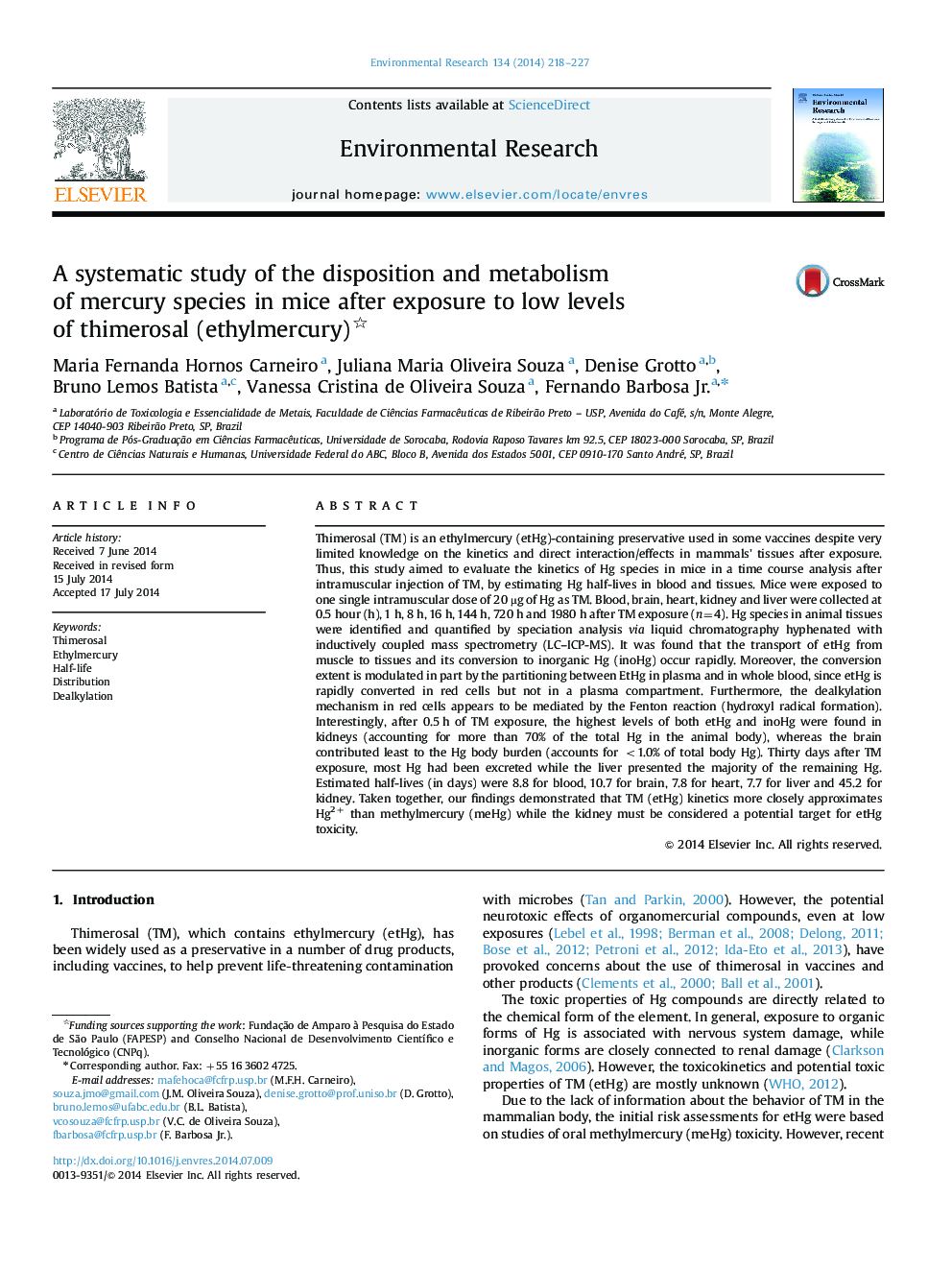| کد مقاله | کد نشریه | سال انتشار | مقاله انگلیسی | نسخه تمام متن |
|---|---|---|---|---|
| 6352571 | 1622567 | 2014 | 10 صفحه PDF | دانلود رایگان |
عنوان انگلیسی مقاله ISI
A systematic study of the disposition and metabolism of mercury species in mice after exposure to low levels of thimerosal (ethylmercury)
ترجمه فارسی عنوان
یک مطالعه سیستماتیک در مورد رسوب و متابولیسم گونه های جیوه در موش ها پس از قرار گرفتن در معرض سطوح پایین تیمرزور (اتیل کرکوری)
دانلود مقاله + سفارش ترجمه
دانلود مقاله ISI انگلیسی
رایگان برای ایرانیان
موضوعات مرتبط
علوم زیستی و بیوفناوری
علوم محیط زیست
بهداشت، سم شناسی و جهش زایی
چکیده انگلیسی
Thimerosal (TM) is an ethylmercury (etHg)-containing preservative used in some vaccines despite very limited knowledge on the kinetics and direct interaction/effects in mammals׳ tissues after exposure. Thus, this study aimed to evaluate the kinetics of Hg species in mice in a time course analysis after intramuscular injection of TM, by estimating Hg half-lives in blood and tissues. Mice were exposed to one single intramuscular dose of 20 µg of Hg as TM. Blood, brain, heart, kidney and liver were collected at 0.5 hour (h), 1 h, 8 h, 16 h, 144 h, 720 h and 1980 h after TM exposure (n=4). Hg species in animal tissues were identified and quantified by speciation analysis via liquid chromatography hyphenated with inductively coupled mass spectrometry (LC-ICP-MS). It was found that the transport of etHg from muscle to tissues and its conversion to inorganic Hg (inoHg) occur rapidly. Moreover, the conversion extent is modulated in part by the partitioning between EtHg in plasma and in whole blood, since etHg is rapidly converted in red cells but not in a plasma compartment. Furthermore, the dealkylation mechanism in red cells appears to be mediated by the Fenton reaction (hydroxyl radical formation). Interestingly, after 0.5 h of TM exposure, the highest levels of both etHg and inoHg were found in kidneys (accounting for more than 70% of the total Hg in the animal body), whereas the brain contributed least to the Hg body burden (accounts for <1.0% of total body Hg). Thirty days after TM exposure, most Hg had been excreted while the liver presented the majority of the remaining Hg. Estimated half-lives (in days) were 8.8 for blood, 10.7 for brain, 7.8 for heart, 7.7 for liver and 45.2 for kidney. Taken together, our findings demonstrated that TM (etHg) kinetics more closely approximates Hg2+ than methylmercury (meHg) while the kidney must be considered a potential target for etHg toxicity.
ناشر
Database: Elsevier - ScienceDirect (ساینس دایرکت)
Journal: Environmental Research - Volume 134, October 2014, Pages 218-227
Journal: Environmental Research - Volume 134, October 2014, Pages 218-227
نویسندگان
Maria Fernanda Hornos Carneiro, Juliana Maria Oliveira Souza, Denise Grotto, Bruno Lemos Batista, Vanessa Cristina de Oliveira Souza, Fernando Jr.,
